
If you’re dreaming of a pool and leaning toward a salt water one, this guide is for you. Learn everything you need to know about salt water pool cost.
Raise your pH and pump up the fun in your pool this summer


Low pH readings can be troublesome for both swimmers and pool health alike, but how do you raise pH in pools when you spot an issue? If your eyes burn after you take a dip, or it looks like the grout or plaster around your pool is eroding faster than normal, your water might be too acidic.
Never fear—you can quickly troubleshoot and potentially fix pH issues yourself. Here's how to raise pH in pools using household items (or those you find on a quick trip to the pool supply store).
Your pool's pH measures how acidic or alkaline (aka basic) the water is. The amount of chlorine in your pool largely dictates the acidity/alkalinity of the water, though other factors can impact the levels, too. Your pool should hover between a range of 7.2 and 7.8 on the pH scale of 1 to 14 (with 1 being extremely acidic).
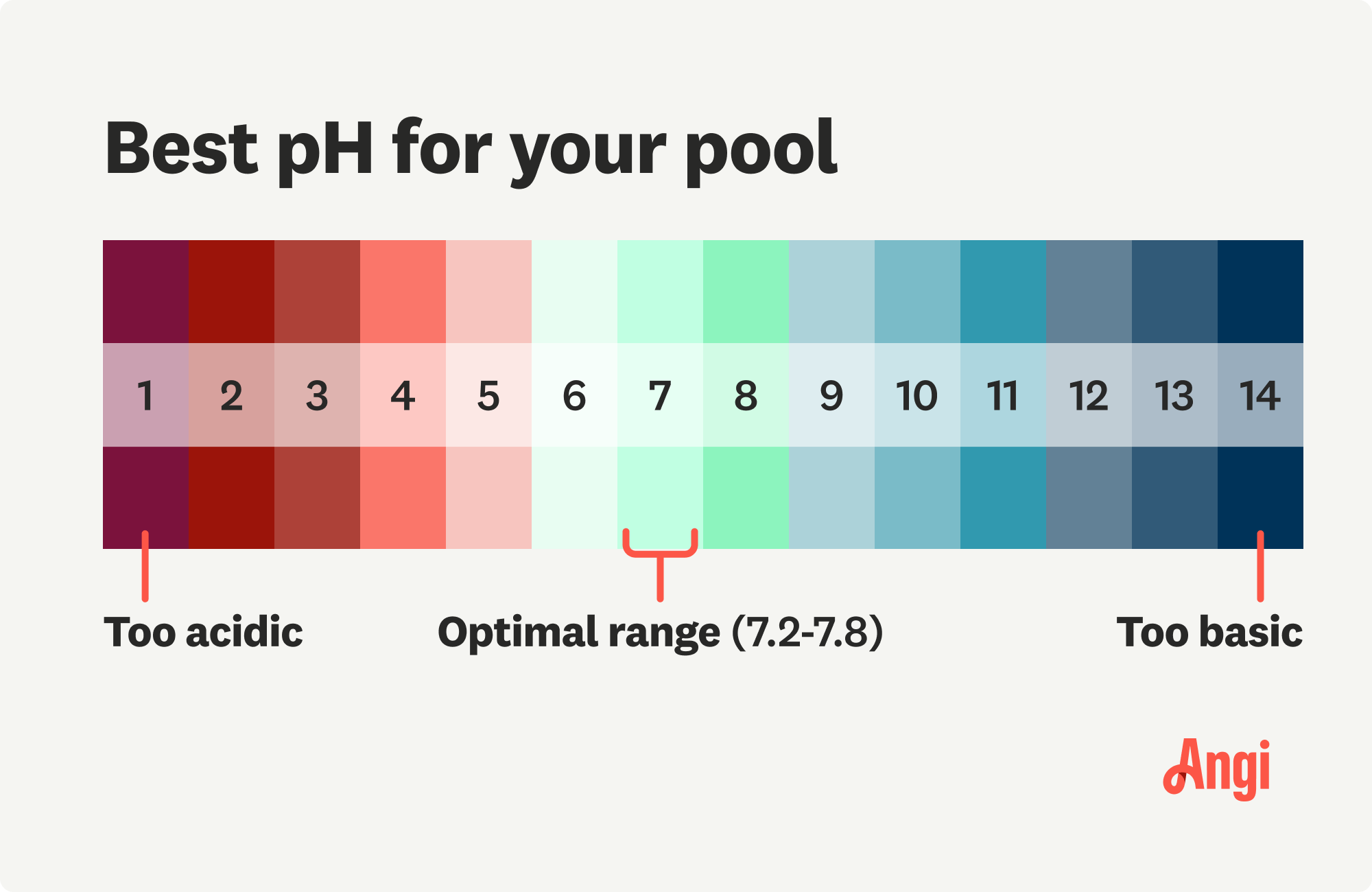
If your pool's water is at a low pH, meaning acidic, you should attempt to raise the levels, or it can spell big trouble. Here's why:
Acidic water can damage your pool liner.
High acidity levels may make a swimmer's eyes sting and turn red.
Pool chemicals work less effectively in acidic water, as the acid breaks chemicals down quickly.
Bacteria and germ growth may become an issue if the chemicals cannot do their job effectively.
Grout, stone, or concrete erosion in and around the pool is more likely.
Corrosion on pool fixtures like stairs, railings, and diving boards is also more likely.
To ensure you and your loved ones get the most out of your backyard oasis for years to come, it's a good idea to get the pH back to within normal range sooner rather than later.
Pool maintenance costs shouldn’t break the bank so long as you invest in regular upkeep. If you buy a liquid pool pH testing kit ($10 to $15) and must make a trip for an alkaline solution, you may spend as little as $40 total on raising your pool's pH.
But you may not even have to pay that much, especially if your pool’s pH isn't that low—in which case, you can use baking soda in your pool to raise its pH, which you may already have at home.
If, after taking measurements and troubleshooting for a few weeks, it seems like your pool’s pH likes to chronically dip low (become more acidic), you may want to invest in a 15-20-pound bulk bag of baking soda (sodium bicarbonate), which costs as little as $20 online.
You'll pay a bit more on the front end, perhaps, but buying in bulk will save you trips to the pool supply store and let you pay less on total price-per-pound as compared to single-use bags.
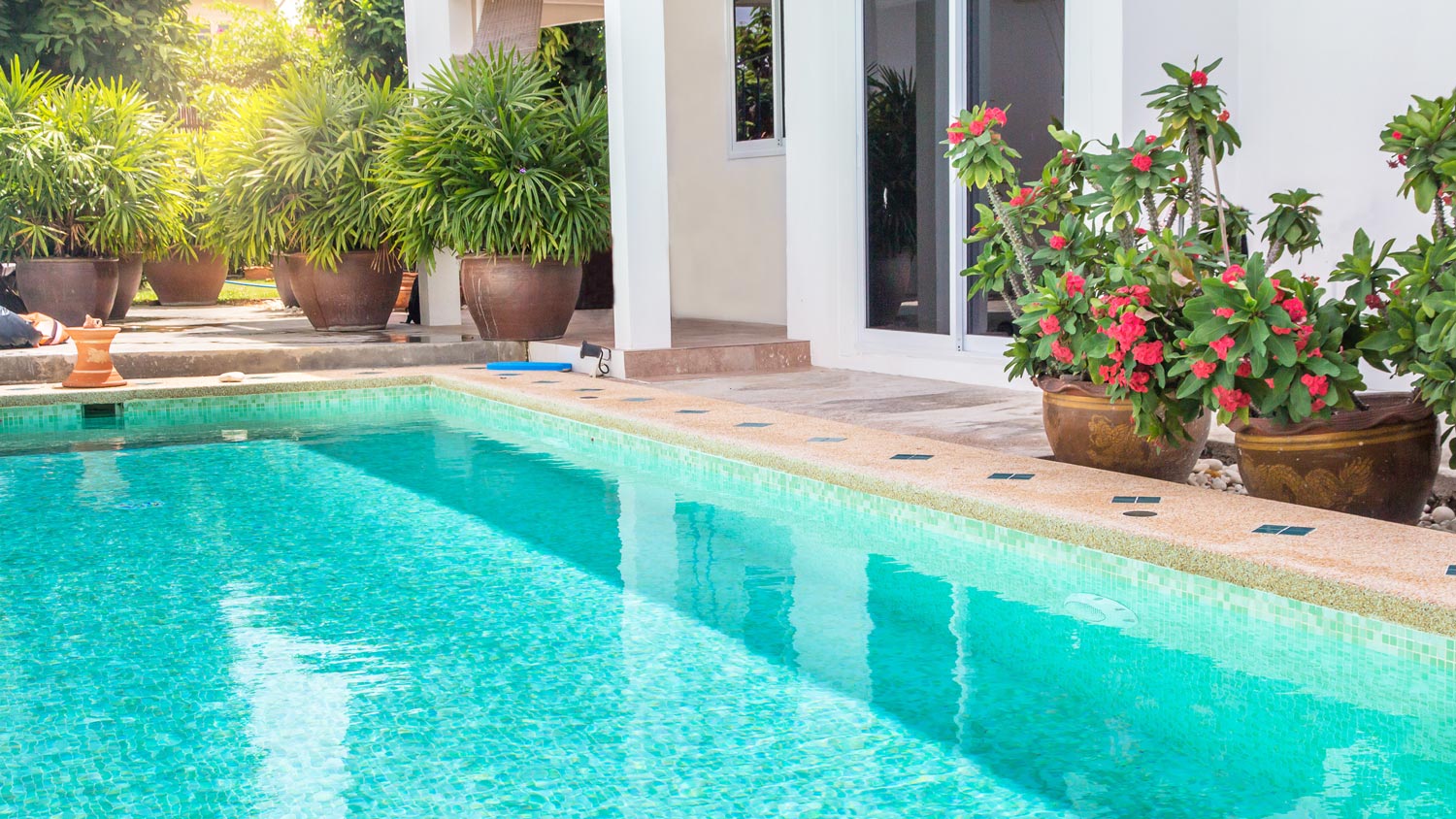
A low pH reading means your pool's water is acidic, which is not ideal for hosting pool parties, nor for the longevity of your pool, for that matter. You won't know for sure that your pool's pH is low without using a testing kit, but you can keep an eye out for these telltale signs of low pH in pool water:
Plaster around the pool wearing down
Stone or tile erosion
Cracks or erosion of grout
Cloudy pool water
Cracked pool liner
Raising a swimming pool's pH can help reverse cracks, erosion, cloudy water, and algae in the pool or slow them down. It's a good idea to address any erosion or cracking as soon as you notice it, and since most fixes only take an hour or two, you should be back to enjoying your newly pristine pool in no time.
If your pool looks to be in serious disarray or you’re unsure how to tackle an issue you see, it makes sense to hire a local pool maintenance service—especially if you don't feel equipped to tackle the job yourself.
There are a handful of reasons that the pH in your pool may be unbalanced. For starters, heavy rainstorms are one of the main culprits of this chemical change because rainwater naturally has a more acidic pH of 5 to 5.5, which is well below the recommended pool pH of 7.2 to 7.8. Even if you take care to cover your pool before big weather events, a bit of water may still find its way through, which is why it’s important to test and regulate your pool once the sun comes out again.
Other factors that can cause a pool’s pH to fall out of balance include:
Infrequent cleanings: It can be difficult to keep your pool in pristine condition if you don’t know how often to clean it. Aim to clean your pool at least once weekly to keep it at its best.
A buildup of algae or debris: If you had a busy couple of weeks and pool cleaning slipped your mind, you might notice more debris floating around your pool or see a buildup of green, slimy residue alongside your pool. Algae and debris can soak up much of the water’s carbon dioxide, which is needed to maintain a balanced pH. Regular cleanings will help prevent this buildup.
Improper use of chemicals: Dealing with chemicals is a tricky task, and one that’s important to pay close attention to, as common pool chemicals like chlorine and shock can wildly impact the pH of your water. Before using any chemicals in or around your pool, make sure you thoroughly read the instructions on the label. When in doubt, contact a local pool cleaner.
Before rebalancing your pool water, try to determine and remedy the source of the issue so that your pH is unlikely to become unbalanced again any time soon.
From testing to ongoing assessment, here's how to get rid of acidic pool water and trade it in for peace of mind while you enjoy splashing around on hot summer days.
As the saying goes, “What gets measured gets managed.” You shouldn't go tinkering with your pool's pH on a whim. Instead, use either a strip or liquid testing kit to get an exact measurement, then troubleshoot from there.
Liquid kits are more accurate, and you can use them multiple times. You should follow the instructions on your kit to get as precise of a reading as possible, but typically, here’s how you can expect a liquid kit to work:
Collect a water sample in the provided container.
Add the specified number of drops to each testing vial.
Gently shake the vials and wait for the color to develop.
Compare the colors in the vials to the pH chart provided.
If you’re using a test strip to test your pool’s water:
Use a clean cup to scoop up a water sample or dip the strip directly into the pool up to your elbow.
If you scoop water out of the pool, wait for the sample to come to room temperature.
Dip the test strip into the water and remove it immediately.
Hold the strip level and compare it to the colors on the pH chart.
It's probably worth investing in one of these kits, especially if you suspect low pH has been an issue for a while or may continue to be an issue for your pool.

Besides excessive chlorine in the pool, the number one cause of low pH is debris, such as dirt and leaves, floating on the surface. Skim these out manually with a net and make sure your filter is clear and running properly before adding anything to neutralize the pH. You can also use a pool vacuum to clean the bottom of the pool.
You may find some interesting pool cleaning hacks online like a popular one that says dropping a tennis ball in the water can prevent sunscreen buildup on the surface of your pool. As long as you can implement these safely, many can be great options for an overall easier summer pool cleaning routine.
Before adding anything to balance out the pH, check your pool's filter and clear out leaves or debris. A properly running (and unclogged) filter will evenly distribute the baking soda or ash you add later.
To determine the correct amount of chemicals, banking soda, or soda ash to use to increase pool pH, you’ll need to know how many gallons of water your pool is holding. To do this, you can use a pool volume calculator to determine which measurements you’ll need to take depending on the shape of your pool.
Baking soda and soda ash are two solutions you can add to water to raise a pool's pH. You can add either one directly to the pool. For the best results, walk around the edge while you dump the chemicals to distribute them evenly.
Add 1.5 pounds of baking soda per 10,000 gallons of water. The average swimming pool holds between 18,000 and 20,000 gallons of water, so you may need up to (or more than) 3 pounds of baking soda. If pH levels are very low (mid-6s or lower), you may want to use soda ash, which you can purchase at a local pool store or online. Read your product’s label to determine how much you should add.
Both baking soda and soda ash may take time to dissolve, making your pool water look cloudy, so you should avoid adding more until what you've added fully dissolves and mixes in with your pool’s water.
You can also use a pH increaser that comes with a pool treatment kit. To do this, follow the manufacturer’s directions.
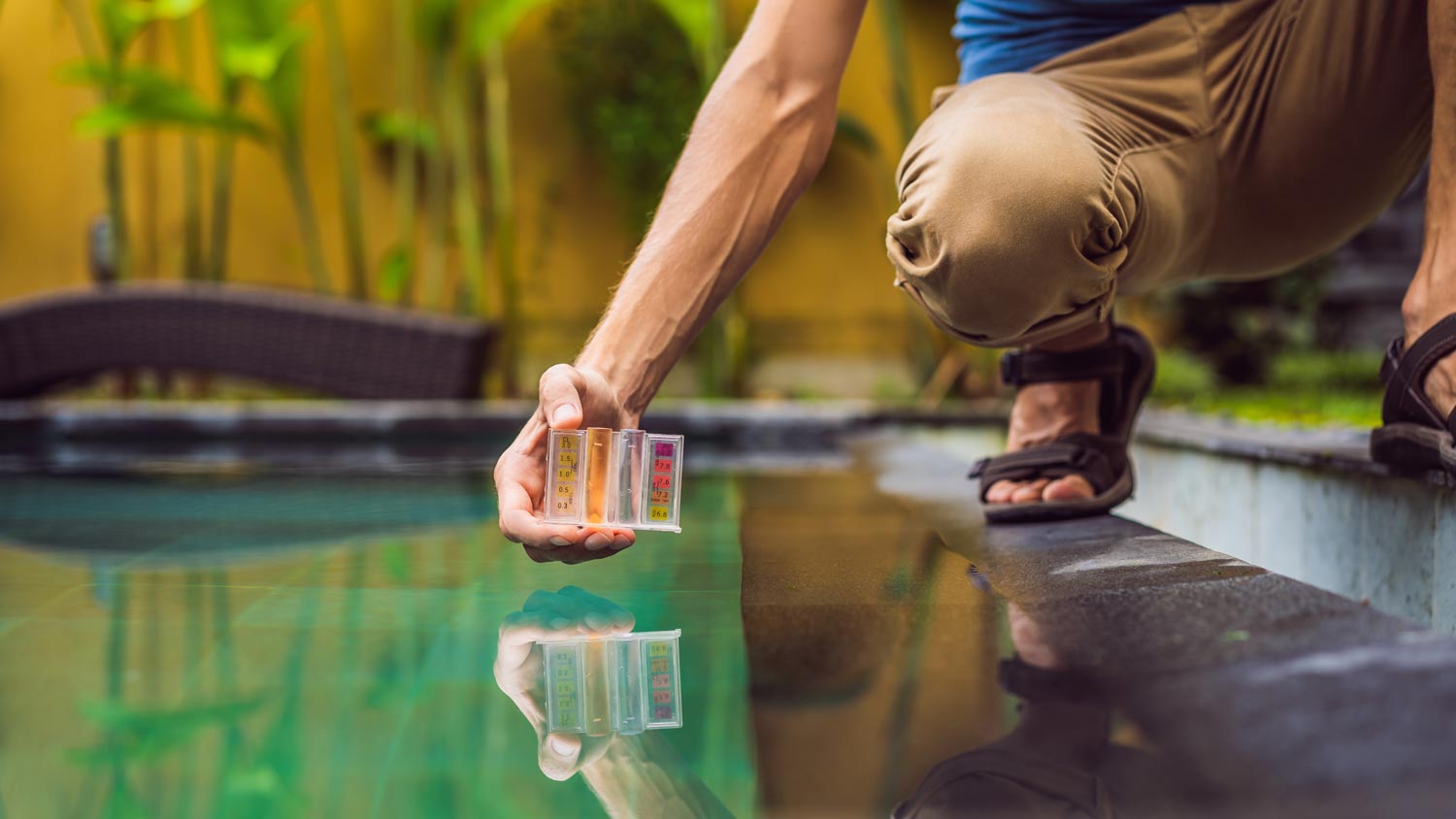
Wait at least 24 hours to measure your pool's pH again after adding baking soda or soda ash.
If your pool’s pH is improving but still low—and the baking soda/soda ash is clearly dissolved into the water—you can add more and repeat this process until you're back in the normal range. If the number doesn’t improve at all, try again (perhaps this time using soda ash instead of baking soda or vice versa).
Retest your pool’s pH two to three times per week to get an accurate reading when trying to raise the pH. If you troubleshoot three or more times without results, it's probably time to call in a professional with experience in increasing pool pH.
Although pool aerators do a lot—including cooling down pool water, keeping your swimming hole clean, and improving water circulation—they can’t raise low pH on their own. When paired with muriatic acid, a chemical that lowers pH levels, a pool aerator will properly and efficiently disperse the chemical so that the water returns to normal more quickly.
To raise the pH in your pool with the aeration method, you’ll first need to add enough muriatic acid to lower the water’s alkalinity to 90 to 100 parts per million (ppm)—this will require about 25.6 ounces of muriatic acid per 10,000 gallons.
Once the water is at that pH, turn on the aerator and allow it to run until the pH has stabilized, which should be in a little over an hour. When in doubt, add less muriatic acid than you might need because using too much can have unintended consequences, like further lowering the pool’s pH and making the water more acidic.
Cleaning and maintaining your pool doesn’t need to be a daily task, but you should think about and plan to keep your pH at a normal range so that you can enjoy your pool with zero maintenance downtime.
Test your levels once a week, and pick the right pool-cleaning chemicals for your pool. Chlorine tablets, for example, have been an issue for some homeowners in raising their pool's pH, as they could cause skin irritation and make it difficult for you to balance your chemicals.
Practice proper DIY pool maintenance strategies, like cleaning out filters and skimming your pool regularly after you've added an alkaline solution to your pool. Regular maintenance, consistently testing your pH, and periodically adding baking soda/soda ash should keep the pH stable.
Be sure to carefully measure the chlorine you add at the beginning of the season. After a few years of owning and operating a pool, eyeballing it can be easy. But correcting the ratio is vital, especially if you've dealt with low pH in previous summers. If you add more throughout the summer, follow the label’s instructions carefully.
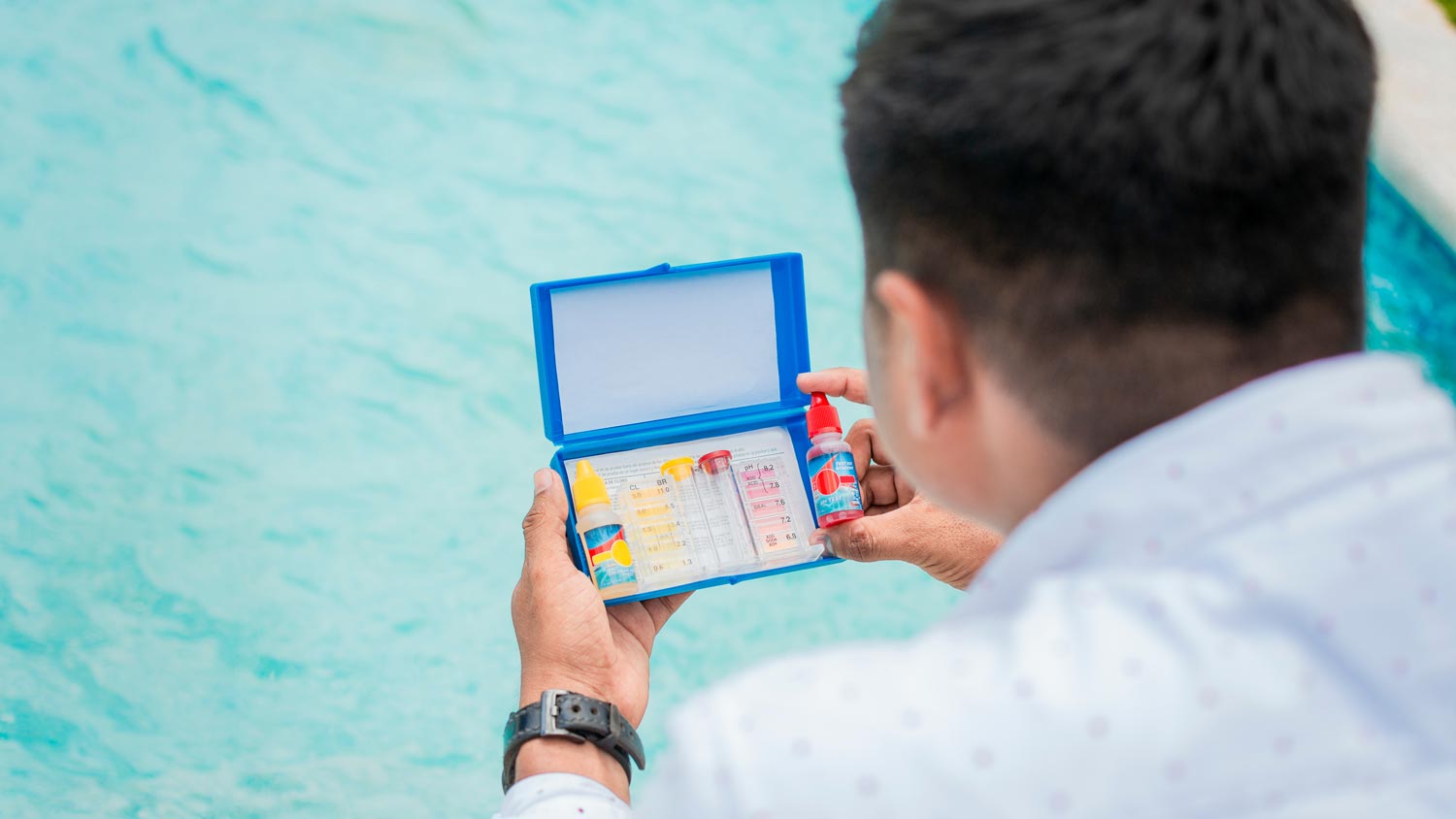
Just knowing how to raise the pH in a pool is already half the battle since the process is relatively easy and inexpensive. Most homeowners can tackle the job without hiring a pool service. Balancing your pH on your own typically only costs around $40 for the chemicals and testing kit, but hiring a pro would mean you’d have to pay for labor on top of the materials that the pro needs to raise your pool’s pH.
However, if low pH is just one of many problems with your pool—or if the water or surface surrounding your pool isn't safe to stand or work on, hire a pool repair company near you.
Ben Kissam contributed to this article.
From average costs to expert advice, get all the answers you need to get your job done.

If you’re dreaming of a pool and leaning toward a salt water one, this guide is for you. Learn everything you need to know about salt water pool cost.

Many factors affect indoor pool costs. From different types and shapes to installation and maintenance, here’s what to consider when pricing out your project.

Lap pools are a great option if you're more interested in exercising than hanging out on a floatie. Learn all about lap pool costs in this guide.
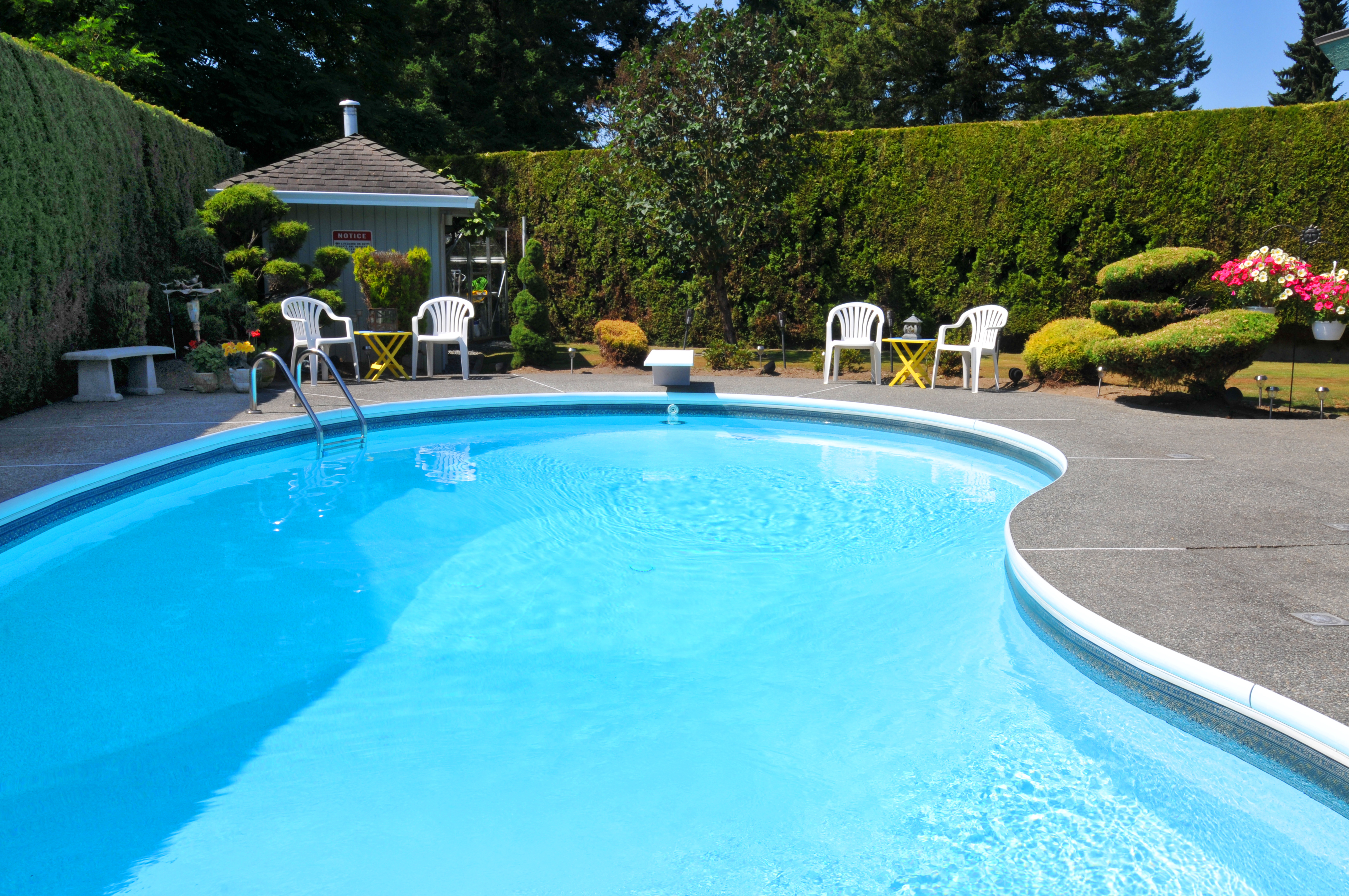
Discover the cost to install a solar pool heater, including average prices, key cost factors, and tips to save on your project.

Install a pool liner by draining the pool, removing the old liner, and laying the new one. Keep reading to learn how to install a pool liner like a pro.

Looking for the best types of pool enclosures to cut down on cleanings? Pool enclosures come in a wide range of prices, shapes, and materials fit to your style.